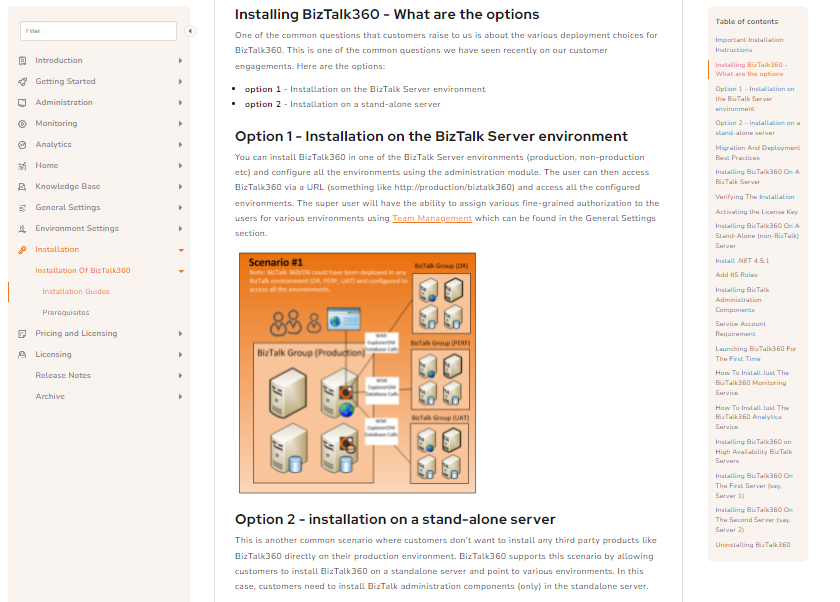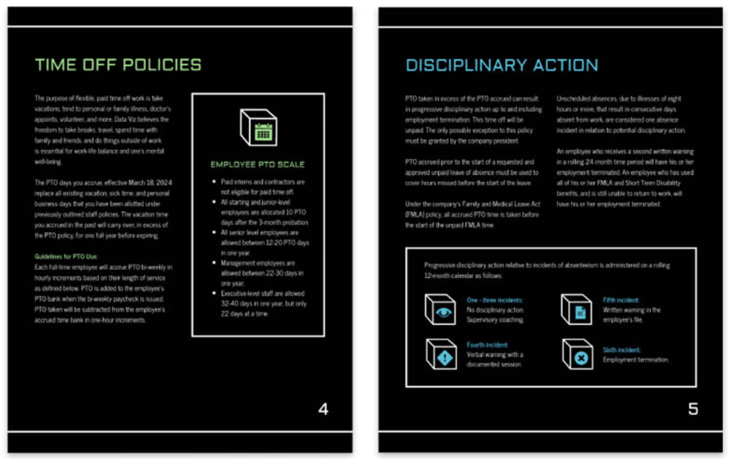Knowledge Management came to be in the 1970s, with the publication of papers by management theorists like Peter Drucker and Paul Strassman. According to Drucker,
Knowledge has to be improved, challenged, and increased constantly, or it vanishes.
Later in the 1970s, Everett Rogers at Stanford and Thomas Allen at MIT launched studies that led to a better appreciation of organizational knowledge and the use of computers to store this knowledge.
In the 1980s, there was a deeper understanding of how knowledge gave businesses a competitive advantage. But there was still a lack of implementation of Knowledge Management initiatives as organizations had not adjusted their strategies.
The 1990s is when Knowledge Management grew to be a significant priority for many companies. Corporate executives didn’t pay too much attention until the publication of a book by Nonaka and Hirotaka Takeuchi titled The Knowledge Creating Company: How Japanese Companies Create the Dynamics of Innovation. This earned Knowledge Management much more attention.
When launching Knowledge Management initiatives, it’s important to distinguish between the two types of knowledge: tacit and explicit. Explicit knowledge will be the focus of this post.
What is Explicit Knowledge?
Explicit knowledge is knowledge that is straightforwardly expressed and shared between people. It has been clearly documented in a tangible form such as a Standard Operating Procedure or a marketing report. How-to-guides and onboarding documentation are also examples of explicit knowledge.
Explicit knowledge exists in the form of data that can be processed and stored, organized and interpreted. It can be clearly articulated and communicated and its meaning is easy to understand. This type of knowledge is highly shareable between employees because it can be captured in a knowledge base or as part of your Knowledge Management strategy.
Explicit Vs Tacit Knowledge
There is a big difference between explicit and tacit knowledge. While explicit knowledge can be formally documented and shared, tacit knowledge exists inside the heads of your employees. It comes from experience learned on the job and can be difficult to articulate or express. It takes the form of personal wisdom, intuition and insights.

The reality is that all knowledge exists on a spectrum and all kinds of knowledge are valuable to your business.
Also Read: Implicit Knowledge: What It Is, Benefits, How To Capture & Share It
Advantages of Explicit Knowledge to Grow your Business
You might be thinking, what’s the point of collecting all this explicit knowledge anyway? The truth is, there are many advantages.
Enhance Organizational Agility
When employees have access to useful explicit knowledge this enhances the agility of your business. Your company can move much faster because the organization knows what the organization knows. Knowledge isn’t held as much in the heads of particular employees so others can take advantage of the documentation.
Clear Communication
Documenting explicit knowledge improves communication between employees by making it clear what people already know to be a fact. Individuals can view the knowledge of others so they waste less time bothering colleagues for help.
Faster Decision-Making
Having explicit knowledge available means employees can make decisions faster. They don’t have to hunt through your organization for the right person to ask for knowledge – the knowledge is already at their fingertips. Instead of waiting for an email or a Slack response, employees can search your Knowledge Management system for the right answer.
No Need to Reinvent the Wheel
If you document past solutions that have been achieved in the company, less time is spent replicating work that already exists. Instead of coming up with a new solution from scratch, employees can benefit from the previous successes of others in the company.
Reduce Errors
Documenting your policies and procedures makes it less likely that employees will make errors. When undertaking a task, employees can consult the documentation to follow established procedures and make sure they get it right.
Create Intellectual Assets for Your Organization
Codifying your explicit knowledge creates intellectual assets for your organization. This knowledge is valuable in itself so you are increasing the net worth of the company. Explicit knowledge is unique to your company and should be guarded as fiercely as you would your trade secrets.
Right to Access Information
Capturing your explicit knowledge and sharing it means your employees have the right access to information, at the right time. You’re improving knowledge flow throughout your organization and making sure it isn’t bottlenecked with just a few employees. Having the right access to information means employees can do their jobs more effectively and you’ll see better outcomes.
Prevent Knowledge Loss
When knowledge resides in the heads of particular employees, you’re at risk of losing that knowledge if the person decides to leave the organization. If you capture some of that knowledge while they’re still in the role, it makes their departure much smoother and helps their replacement get up to speed faster.
Adaptable Techniques to Transfer Knowledge
There are different types of knowledge transfer that can occur within the organization.
1. Explicit-to-Explicit
Explicit-to-explicit knowledge transfer involves taking explicit knowledge that already exists and combining it to create a new form of information. Knowledge is transformed in the sense that you alter the meaning of the document to present it in a new way.
Some examples include digitized form of documents, transfer of online documents to a PDF file, or sharing a file digitally.
2. Explicit-to-Tacit
Explicit-to-tacit knowledge transfer is a process known as internalization. Internalization can occur when an individual strives to improve their knowledge in a particular field, imbibing explicit knowledge until it becomes a tacit skill that the person can apply.
Some examples include reading a document, watching user videos, or learning through guides.
3. Tacit-to-Explicit
Tacit-to-explicit knowledge transfer is known as externalization and occurs when an individual takes learned knowledge and applies it to external documentation. They take what they know and encode it in a format that others can understand and learn from.
Some examples include documented news on media, product reviews, technical reviews, traceability matrices, or writing journals and articles.
4. Tacit-to-Tacit
Tacit-to-tacit knowledge transfer is exchanging knowledge between individuals that allows them to learn and apply the information internally. This might occur during coaching and mentorship, or when one employee is shadowing another.
Some examples include word-of-mouth, public gatherings, group discussions, market surveys, and opinion polls.
Strategic Steps Involved in Explicit Knowledge Management
Set goals for Knowledge Capturing and Transfer
First and foremost, you need to set your goals for knowledge capture and transfer. Without goals, you won’t know where you’re headed and your Knowledge Management strategy will lack focus.
It’s crucial to understand in what circumstances your organization typically loses knowledge, and what information your employees need to complete their work. Try to get a picture in your mind of what the perfect scenario for your business would be.
Based on these hypotheses, try to formulate short-term and long-term goals. These offer specific solutions for your organization’s challenges and problems. Short-term goals help you to refine your strategy and help you figure out if you’re going in the right direction. Long-term goals are big picture milestones that achieve Knowledge Management objectives.
Identify knowledge gaps
The next step is to complete a documentation audit and identify where your knowledge gaps are. If you haven’t looked at your documentation for a long time then there are likely to be many areas that need updating.
When you’ve gone through your documentation with a fine-tooth comb, it’ll be easy to see which topics are missing. You can also ask your employees which knowledge they would like to see documented, and take a look at some of your processes to figure out which tasks should be recorded.
Involve employees to contribute knowledge
Knowledge Management should be a team effort. Only by involving all your employees in your documentation efforts can you harness the collective knowledge of your organization. This means Knowledge Management should be emphasized from the top down, and your senior leadership team should lead the way in contributing knowledge.
Knowledge Management will only be successful if knowledge sharing is prioritized for everyone in the company. You should reward your best contributors either financially or with some other kind of incentive. Once your Knowledge Management efforts get off the ground, employees will see the benefits of participating but it can be a little tricky to get started.
Also Read: The Knowledge Sharing Methods You Need to Know
Pick a user-friendly tool to capture knowledge
Knowledge Management won’t work if you don’t have the right tools to capture your knowledge. A Knowledge Management System is a vital component of your strategy, and that’s why you need a tool that can enable you to manage knowledge centrally while also enabling contributors to access the system.
You should consider Document360, which is a robust knowledge base platform that can be used internally to capture knowledge. You can set roles for different contributors so you can control who has access to publishing or deleting content.
Document360 allows you to create a sleek and professional website to house your company knowledge and which is only accessible to your team. Authoring content is a breeze using either the WYSIWYG editor or Markdown editor.
Create a self-service Knowledge Base for your teams, customers & organizations.
Book a Demo
Design templates for each topic
In order to make sure your team is consistently creating content, you need to design templates for each topic. Without proper guidelines in place, employees will be authoring content in different styles and formats that negatively impacts the comprehensibility of your articles.
Your templates should make explicit exactly how employees are to structure their content. It should include instructions for how to write the title, whether to include an introduction, and how to format their article into sections. The more specific you can be, the easier it will be for employees to create consistent content that delights your audience.
Conduct regular audits to check team contribution
Your Knowledge Management System is not a static resource, meant to be built once and then left alone forever. It’s a constant process to check how regularly your team is contributing to the store of knowledge.
If employees aren’t contributing as much as you’d like, then you know it’s time for a push to promote Knowledge Management within the organization. Perhaps you need to make it easier for employees to share their knowledge, and maybe your current process is too complicated.
Use analytics to collect feedback
The right Knowledge Management software should come with analytics that allow you to check the performance of your company’s knowledge. Once you’ve started to create a useful, readily-available store of company knowledge, you’ll want to iterate on your processes and learn where you have areas that could be improved.
Your Knowledge Management System analytics can tell you how users are connecting with your expanding knowledge base. You can find out terms users are searching for, which content is most popular, and which content is most valuable.
Transfer tacit knowledge to explicit knowledge
A big part of your Knowledge Management strategy is encouraging employees to turn their tacit knowledge into explicit knowledge. It’s these hard-to-capture skills and experiences that can potentially be most useful to your organization, and would be devastating to lose if your employee moved on to greener pastures.
Approach individual employees and ask them to document their tacit knowledge. Show them examples of really helpful documentation that has turned tacit knowledge into explicit knowledge.
Improve and maintain the process
Knowledge Management is ongoing. You need to schedule regular time to check that your strategy is on track and continuing to operate to the best it can be. It’s likely that certain processes will be able to be improved while other elements will be working well and can be maintained.
Examples of Explicit Knowledge Management
User Guides
A user guide, or user manual, supports users in operating a particular product, service, or application.

User Manul from Biztalk360
Also Read: Ultimate Guide to write instruction for User Manual
Code of Conduct
A code of a conduct is a set of guidelines regarding behavior that employees should follow within an organization.
Employee Handbook
An employee handbook is a book given to employees by employers that outlines employment and job-related information that employees need to know.

Organizational policies from Data Viz Pro
Operations Manual
The operations manual is a document in which the employer provides guidance for employees to perform their functions correctly.
Standard Operating Procedures
A standard operating procedure is a set of step-by-step instructions that enable workers to carry out routine operations.

Business Glossary
A business glossary is a list of business terms and their definitions that companies use to ensure the same definitions are being used across the business.
Final Note
It’s well-worth the effort of documenting your company’s explicit knowledge to enhance productivity and stimulate business development. You’ll need to work with a combination of strategy and process, dedication from employees, and the right Knowledge Management System in order to manage and share your explicit knowledge.



 –
– 

